Trundle Wheel
Design and make an accurate distance measuring device, measure, count, and calibrate scales for accuracy.
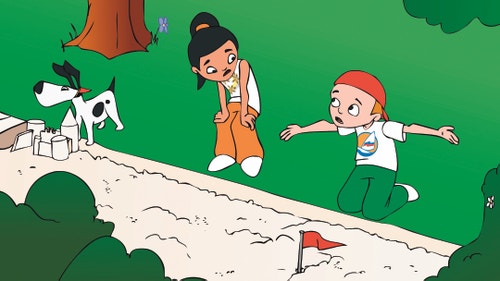
Connect
(5-10 Minutes)
Jack and Jill are in the park preparing for the school sports day. Their favorite sport is the long jump. Jack has just made a huge jump. He is all excited and wants to know how long his jump is.
Jill has not got a ruler long enough to measure the distance so she is doing it in footsteps. Zog the Dog feels that he is much better at jumping so he is trying too.
Jill says that Jack’s jump was 58 cm (≈ 22.8 in).
Jill takes her turn on the long jump. She says her jump was 4 meters (≈ 4 yards), so Jack thinks she is just guessing ... and not very well, either!
They need some sort of device that can measure a long jump properly.
What sort of measuring machine can you invent that could measure a long jump?
Let’s find out!

Construct
(20-25 Minutes)
Build the Trundle Wheel
(all of book 5A and book 5B to page 6, step 11)

If using whiteboard markers, you can write directly on the blank plastic dial disc. Otherwise trace around the disc to create your own copy.
Make sure that the pointer moves smoothly as you push the trundle wheel. If it is stiff, loosen overly tight axle bushings and make sure all other elements are firmly pressed together.
What is this measuring device good at measuring? Ask the students for ideas and draw up a list.
Measure all sort of lengths, such as your arm, hand, and leg to get a feel for measuring.
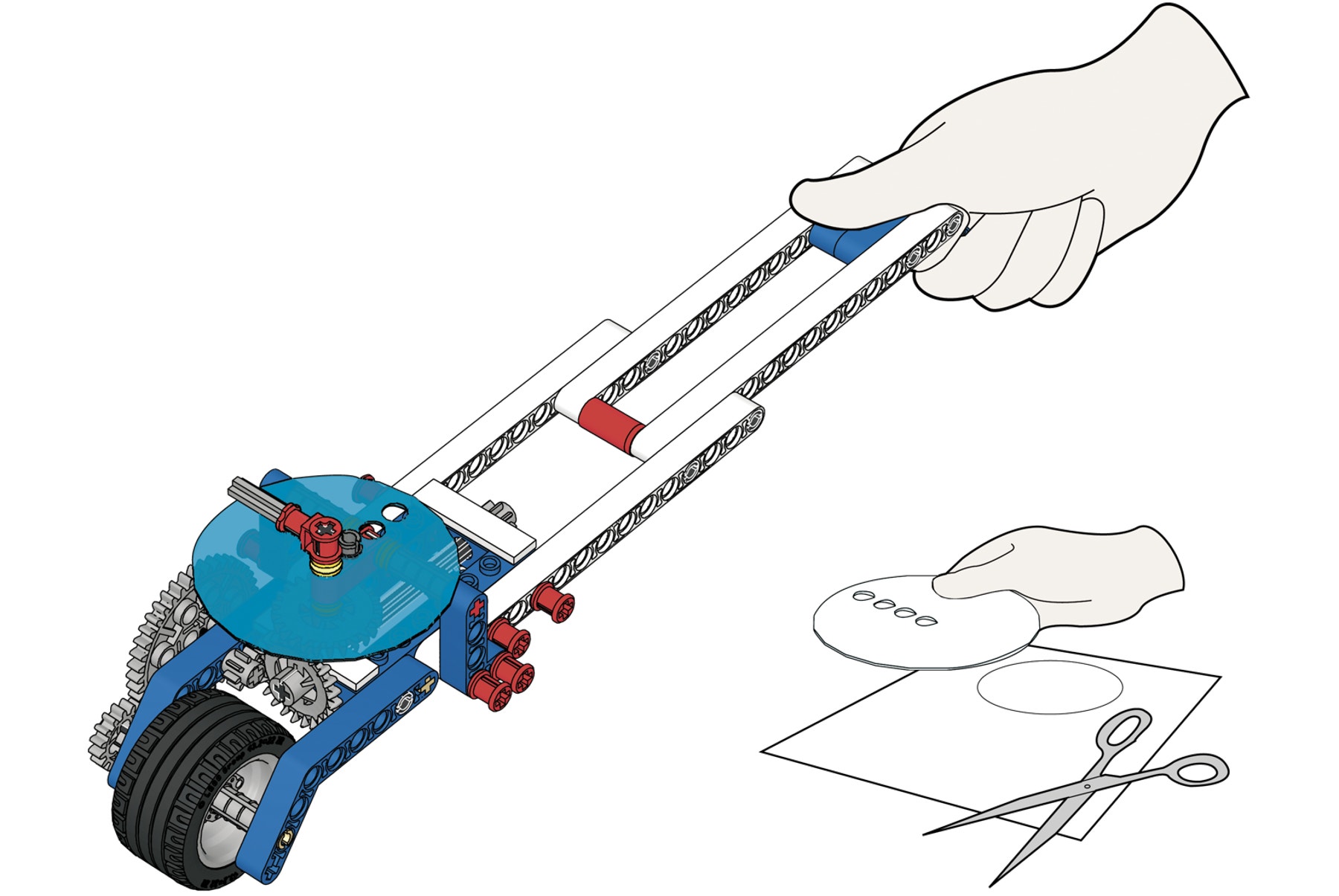
Contemplate
(20-25 minutes)
Stepping Out: Making a Foot Wheeler
How many “feet” fit on the scale?
Measure your shoe – several times! Mark zero and then add a new mark to the dial each time you reach the end of your shoe until you’ve been around the scale (you probably won’t get a whole number of shoes).
This is calibrating the scale in units of ‘shoe’.
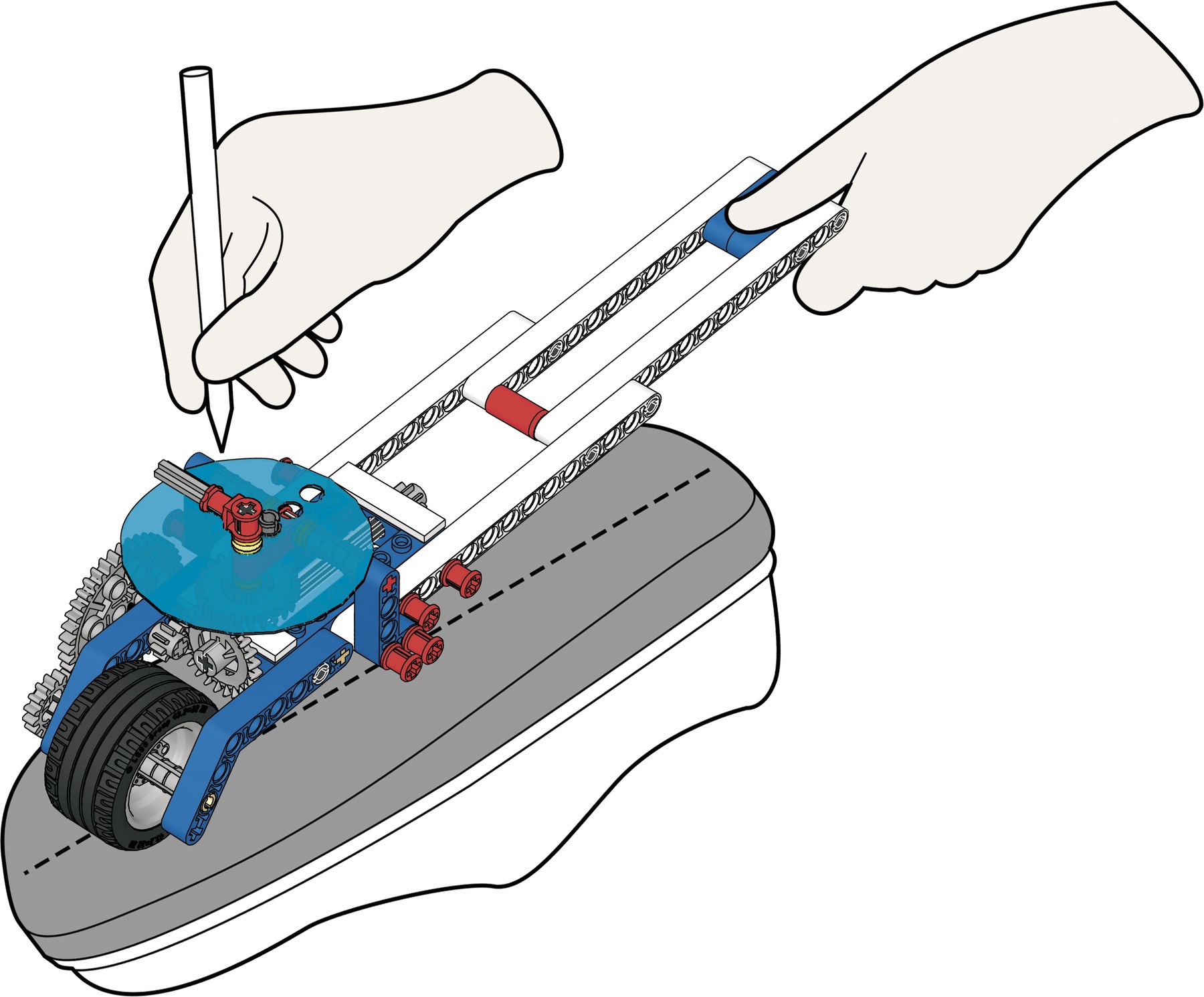
Note
Learn how to reset the pointer after each measurement
Predict
How many shoes wide is your desk! First use your foot wheeler to measure it! Then take off your shoe and measure it with your shoe. How accurate was your foot wheeler?
What are the problems of measuring in shoe lengths?
People’s feet are not always the same size!
This is why we usually select a standard unit of measurements, such as the metric system or US customary system.
Note
The accuracy of our scale depends on how much pressure the children place on the tire. Light pressure is ideal.
Try it and see.
Meter magic trundle: is it better than a ruler?
Collect three items that you believe are less than 1 meter (≈ 1 yard) long.
• Predict how long each is
• Measure with the trundle wheel
• Measure with a ruler
• What did you discover?

Rulers are the most accurate, usually followed closely by the trundle wheel, and then predictions. What trundle wheels are really good at is quickly measuring things that are longer than a normal ruler.
But what happens for distances over 1 m (≈ 1 yd)?
What happens with your perfect long jump?
If you measure 1.5 m (≈ 1.5 yd), the pointer shows 50 cm (≈ 19.6 in)! The pointer has been around once and is starting again. This may be a problem: you need to remember how many times the pointer passes the zero marker.
Continue
(25-30 Minutes)
How can we use the trundle wheel to measure long jumps of more than 1 m
(≈ 1 yd)?
What might happen if we add another dial with a pointer that moves much slower than the first dial?
It should measure more than 1 meter (≈ 1 yard).
Build the model to page 12, step 11.
Trace and cut out the 3 m (≈ 3 yds) dial in paper if you want to keep your dials. Wheel it further than 1 m (≈ 1 yd). Practice reading both scales for extra accuracy.
Gear Facts
The two pointers are connected via an 8-tooth and a 24-tooth gear. This gears down the speed of the second pointer three times, allowing one dial to now cover 3 m (≈ 3 yds).
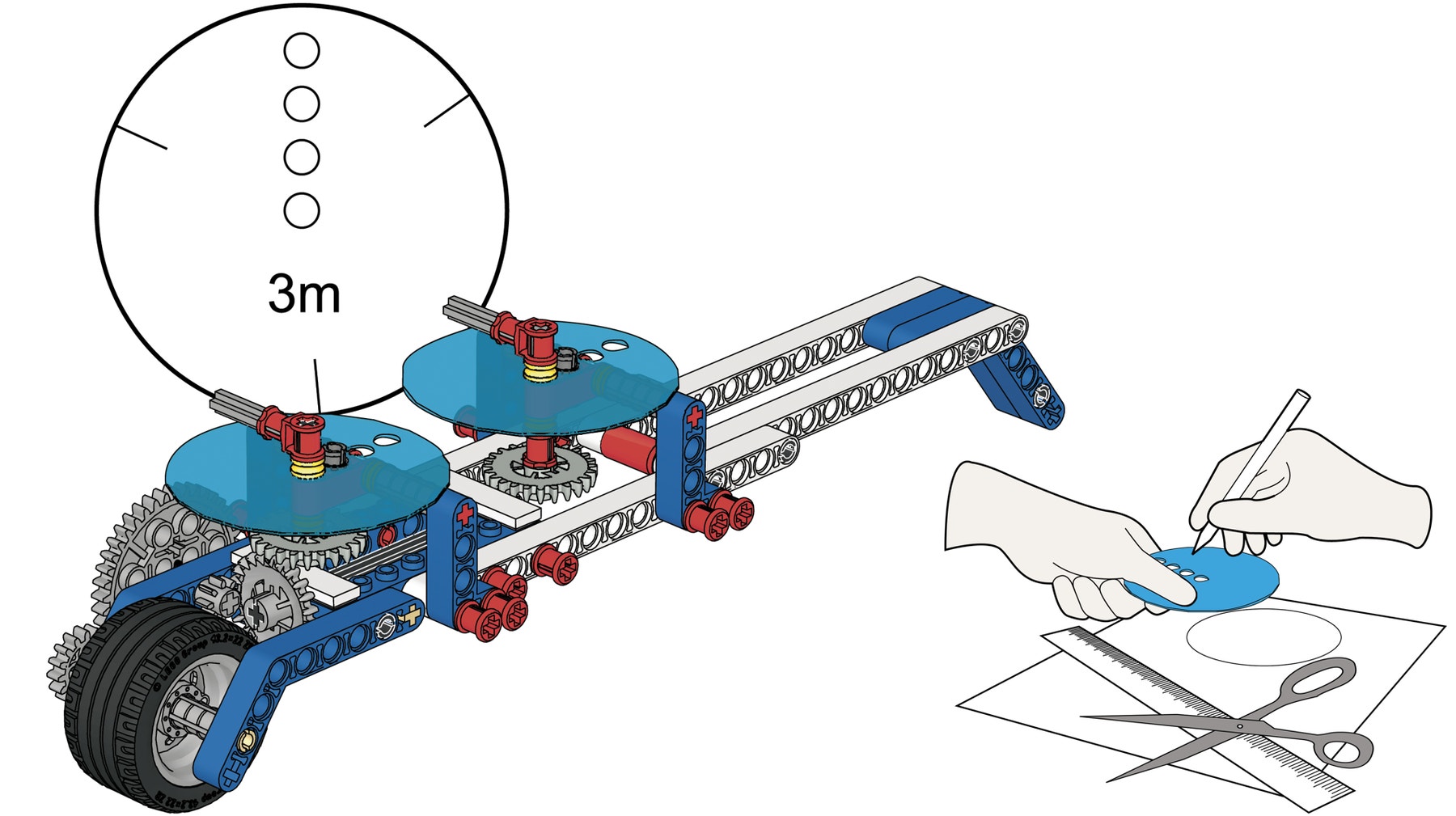
Now it’s time to start jumping!
Students should practice their long jump skills, though obviously conditions in the classroom have to be taken into consideration and safety comes first. One possibility is to go outside and practice jumps on a lawn, another is to use a standing long jump
Predict how far you’ll jump. Then use the trundle wheel to measure the result. You could also try measuring with a ruler. What did you discover?
It is much easier to use the trundle wheel. It measures up to 3 m (≈ 3 yds) in one go. But you must read two dials for the most accuracy. By comparison, you need to move the ruler a lot and add up the amounts in your head. And every time you move the ruler there’s a chance that an error might occur.

Leonardo’s Magic Body Facts
What does Leonardo da Vinci’s famous symbol mean?
Try measuring all the distances shown. See if you can spot any ‘patterns’. If another person tells you her height, can you tell how long her arm span will be – or how long her head will be?
Often arm span (1) and height (2) are the same. The head (3) is often 1/6th of a person’s full height. These are handy rules to know when drawing people. What about legs and arms?
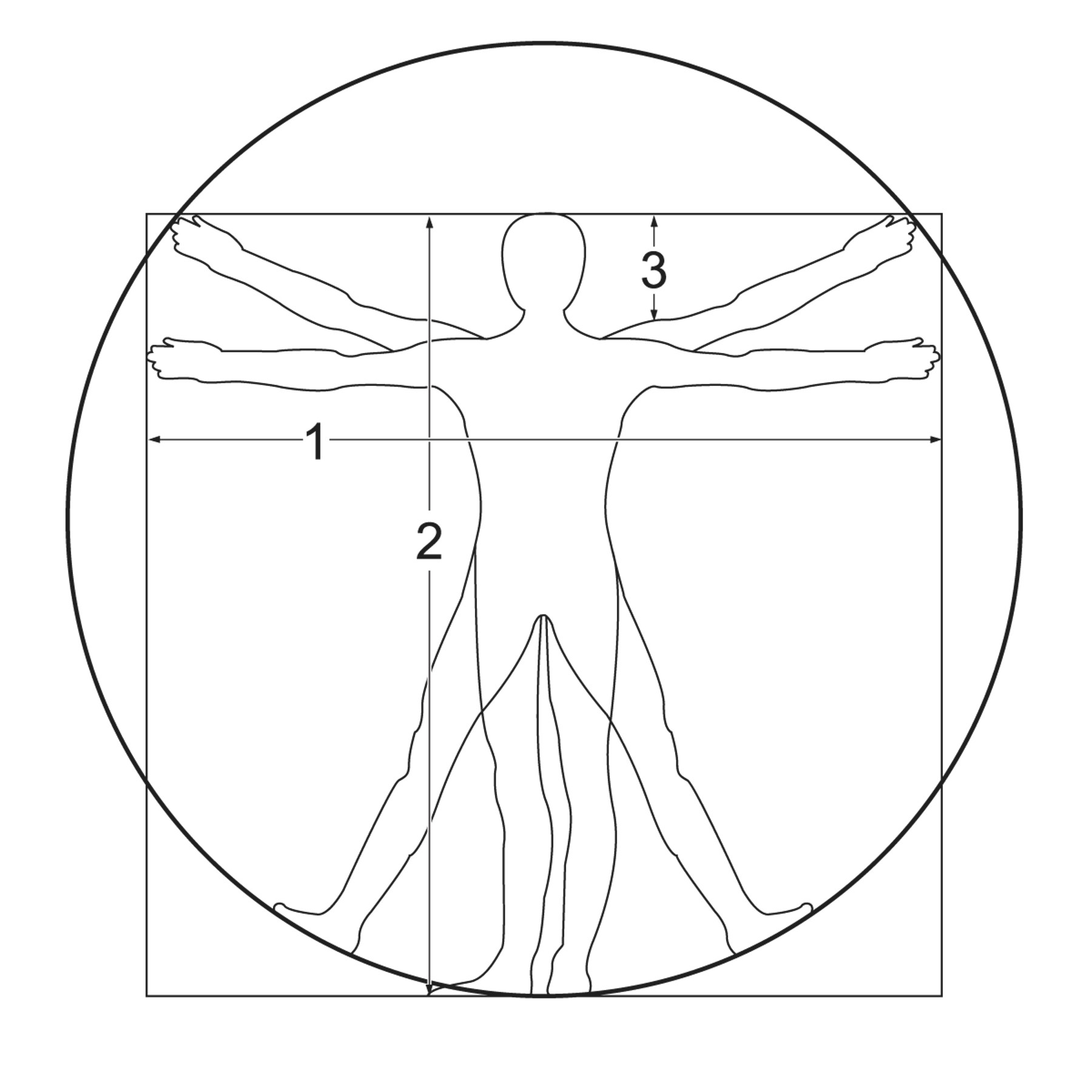
Idea
The wonderful thing about a trundle as opposed to a ruler is also that it is great at measuring around curves. Estimate your head and waist size –then measure and be amazed.
Note
You may need to measure with the person standing against a wall and running the trundle wheel up the wall beside them.
Teacher Support
Students will explore the concepts of:
Scientific investigation
Mechanisms – gear ratios, gearing down
Combining materials
Calibrating scales
Formal and informal distance measuring
9686 Simple & Powered Machines Set (two students per set recommended)
Ruler
Three straight-edged objects less than 1 m (≈ 1 yd) long
Space on a smooth floor to safely carry out a long jump
Whiteboard markers
NGSS
Crosscutting Concepts
Scale, proportion, and quantity
Science and Engineering Practices
Developing and using models
Planning and carrying out investigations
Analyzing and interpreting data
Constructing explanations and designing solutions
Common Core Mathematics Standards
7.RP.A / 6.NS.B / 6.EE.C / 7.EE.B / 8.EE.B / 8.F.B / 6.SP.A
Common Core English Language Arts
SL 6.1 / 6.2 / 7.1 / 7.4 / 8.1
RST 6-8.3 / 6-8.4 / 6-8.7
WHST 6-8.1 / 6-8.7 / 6-8.8 / 6-8.9
Student Material
Share with:
 Google Classroom
Google Classroom



